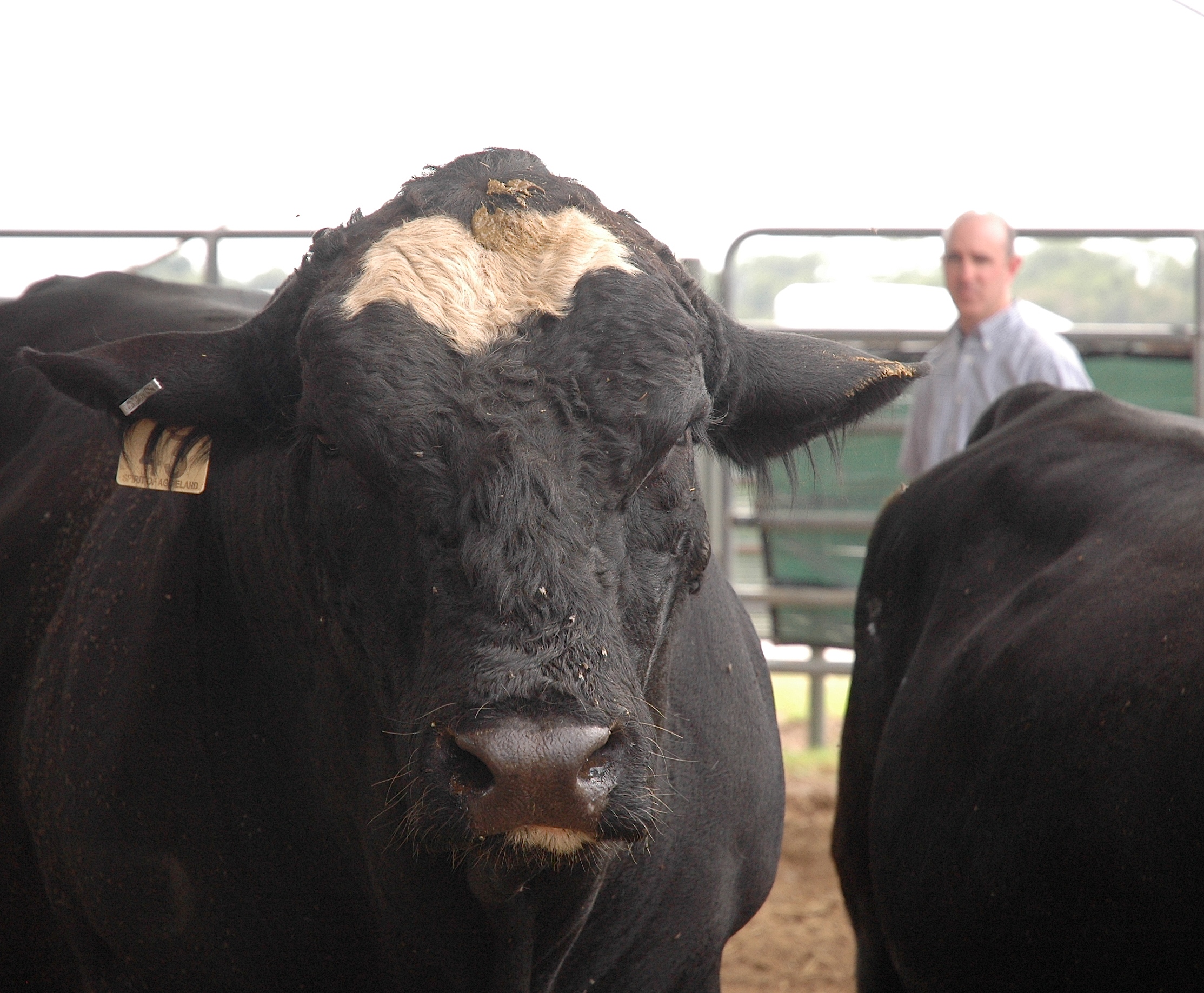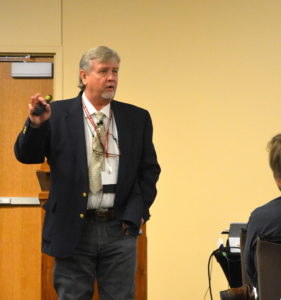Farm & Ranch
[AgriLife Today] Breeding soundness exams can prevent a financial wreck at the ranch

By: Blair Fannin
- Writer: Blair Fannin, 979-845-2259, [email protected]
COLLEGE STATION — The importance of a breeding soundness exam in herd bulls can prevent costly revenue losses, according to a Texas A&M AgriLife Extension Service economist.
Stan Bevers, AgriLife Extension economist in Vernon, shared the data from a large New Mexico ranch recently during the 62nd Texas A&M Beef Cattle Short Course in College Station.
In his evaluation of the past 25 years of income and expenses on the ranch, veterinary services and breeding per herd accounted for 3.1 percent of total expenses, or $27.88 per breeding female.
But in 2003, disaster set in. Bevers said pregnancy rates in 2003 dropped 50 percent.
“The ranch wasn’t doing any breeding exams and it hit them hard, very hard,” Bevers said. “The initial loss was $62,000 in calf sales. It also hurt their breakeven costs.”

Stan Bevers, Texas A&M AgriLife Extension Service economist in Vernon, discusses the importance of breeding soundness exams in herd bulls at the Texas A&M Beef Cattle Short Course recently. (Texas A&M AgriLife Extension Service photo by Blair Fannin)
Bevers said breakeven costs were calculated by taking the expenses divided by the total pounds of production. At the time pregnancy rates decreased, breakeven expenses increased from $1.19 per hundredweight to $1.75 per hundredweight.
The impact of the increase had significant repercussions later as the ranch looked to expand the herd.
“The board of directors purchased an additional 15,000 acres and wanted to stock it with replacement heifers,” Bevers said. “By missing out on the $62,000 in calf sales, needless to say, this set them back at least two years.”
Ultimately, Bevers said six bulls out of the 26-bull battery were sterile. A breeding soundness exam would have cost the ranch $1,560 versus losing $61,677 in calf sales.
“What this tells us is that it all begins with reproduction,” he said.
Bevers said cattle producers should view the expense of breeding soundness exams as purchasing an insurance policy.
“If she doesn’t get bred, nothing else matters. How much are you willing to assume, how much insurance can you afford to purchase?”
After Bevers’ presentation, he thanked the audience and told attendees he would be retiring after 27 years with AgriLife Extension at the end of August.
“It’s been a pleasure to serve you all of these years and provide you with information to help your operations become more profitable,” he said.
-30-
Find more stories, photos, videos and audio at http://today.agrilife.org
Farm & Ranch
Managing Show Cattle Through The Winter

By Heather Welper
Husband and wife duo, Heather and Calvin Welper, are the Co-Owners and Operators or Two C Livestock, located in Valley View, Texas.
The pair’s operation has a show cattle focus where they raise and sell purebred heifers of all breeds and club calf Hereford steers.
When it comes to show cattle, the Welpers know a thing or two including how to prepare for the cold winter months and the Texas major show season run.
To read more, pick up a copy of the November edition of North Texas Farm & Ranch magazine, available digitally and in print. To subscribe by mail, call 940-872-5922.

Farm & Ranch
Double M Ranch & Rescue

By Hannah Claxton, Editor
As the sun rises each day, so do the dozens of mouths that Meghan McGovern is responsible for getting fed. Rather than the sounds of a rooster crowing, McGovern hears the bellows and bleats of a variety of exotic deer, the chortle of kangaroos, the grunts of water buffaloes, and the chirps of a lemur.
Nestled against the banks of the Red River, the Double M Ranch and Rescue, with its high game fences and deer sprinkling the landscape,s its in stark contrast to the surrounding ranches.
“Having deer is kind of like eating potato chips- you can never actually have just one,” said McGovern with a laugh.
McGovern has several herds to take care of- fallow deer, axis deer, water buffalo, goats, and bison. In smaller numbers, there’s also a few kangaroos, a lemur, a potbelly pig, a pair of zebras, a watusi, and a few horses.
To read more, pick up a copy of the November edition of North Texas Farm & Ranch magazine, available digitally and in print. To subscribe by mail, call 940-872-5922.

Farm & Ranch
Acorn Toxicity

By Barry Whitworth, DVM, MPH
With the prolonged drought, most pastures in Oklahoma end up in poor condition. With the lack of available forage, animals may go in search of alternative foods.
If oak trees are in the pastures, acorns may be a favorite meal for some livestock in the fall. This may result in oak poisoning.
Oak leaves, twigs, buds, and acorns may be toxic to some animals when consumed.
To read more, pick up a copy of the November edition of North Texas Farm & Ranch magazine, available digitally and in print. To subscribe by mail, call 940-872-5922.

-

 Country Lifestyles2 years ago
Country Lifestyles2 years agoScott & Stacey Schumacher: A Growth Mindset
-

 Country Lifestyles8 years ago
Country Lifestyles8 years agoStyle Your Profile – What your style cowboy hat says about you and new trends in 2017
-

 HOME8 years ago
HOME8 years agoGrazing North Texas – Wilman Lovegrass
-

 Equine1 year ago
Equine1 year agoThe Will to Win
-

 Outdoor10 years ago
Outdoor10 years agoButtercup or Primrose?
-

 Country Lifestyles5 years ago
Country Lifestyles5 years agoAmber Crawford, Breakaway Roper
-

 Country Lifestyles9 years ago
Country Lifestyles9 years agoJune 2016 Profile – The man behind the mic: Bob Tallman
-

 Country Lifestyles8 years ago
Country Lifestyles8 years agoDecember 2016 Profile, Rusty Riddle – The Riddle Way




